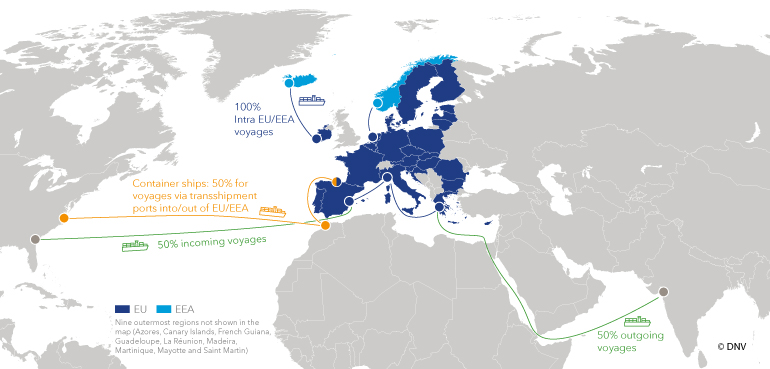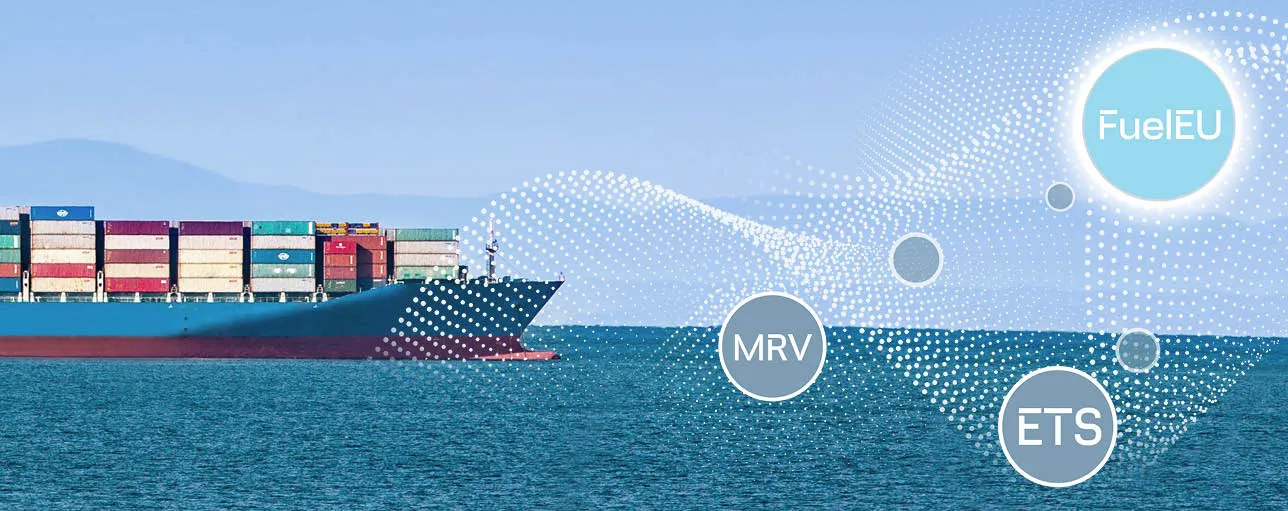What is FuelEU Maritime?
The EU has adopted the FuelEU Maritime regulation to increase the share of renewable and low-carbon fuels in the fuel mix of international maritime transport in the EU.
FuelEU Maritime sets well-to-wake greenhouse gas (GHG) emission intensity requirements on energy used on board ships over 5000 GT trading in the EU and will be implemented from 1 January 2025.
The regulation also requires passenger and container ships to connect to onshore power supplies at major EU ports from 2030, when at berth for more than two hours. This will be extended to all ports with onshore power supply from 2035.
How does FuelEU Maritime work?
FuelEU Maritime sets requirements on annual average GHG intensity of energy used by ships trading in the EU or European Economic Area (EEA), measured as GHG emissions per energy unit (gCO2e/MJ).
GHG emissions are calculated in a well-to-wake perspective, including emissions related to extraction, cultivation, production and transportation of the fuel, in addition to emissions from energy used on board the ship.
Calculations will be set relative to the average well-to-wake fuel GHG intensity of the fleet in 2020 of 91.16 gCO2e per megajoule (MJ). This will start at a 2% reduction in 2025, increasing to 6% in 2030, and accelerating from 2035 to reach an 80% reduction by 2050.
The GHG intensity requirement applies to 100% of energy used on voyages and port calls within the EU or EEA, and 50% of energy used on voyages into or out of the EU or EEA.
 FuelEU Maritime requirements based on percentage of energy used on voyages
FuelEU Maritime requirements based on percentage of energy used on voyages
(Click here to open high-resolution version in a new tab)
What actions need to be taken by shipowners?
The first steps in complying with FuelEU Maritime is the submission of a FuelEU Monitoring Plan to a registered verifier, such as DNV. This will outline how you intend to monitor and report emissions for each ship in your fleet and should be completed before 1 September 2024.
From 1 January 2025, shipowners will be required to start reporting key data related to FuelEU Maritime, such as fuel consumption, CO2 emissions and distance travelled.
Because reporting will be carried out on an annual basis, a FuelEU Maritime report individual to each ship in your fleet will be required to be submitted, with the first of these to be submitted on 1 January 2026.
To find out more about how you can comply with FuelEU Maritime, go to the Compliance tab.
How can DNV help with FuelEU Maritime?
DNV is ready to assist shipowners at every stage of their FuelEU Maritime journey. This starts with our user-friendly and efficient FuelEU Monitoring Plan Online Form. This is available to all companies and contains everything that shipowners need to ensure they are fully prepared for the upcoming implementation of FuelEU Maritime.
As anaccredited verifier, DNV offers a Verification of FuelEU Emissions Report service to all of our MRV customers, starting with the first verification period in 2026.
Explore how DNV can assist you with FuelEU Maritime by visiting our Service tab.
